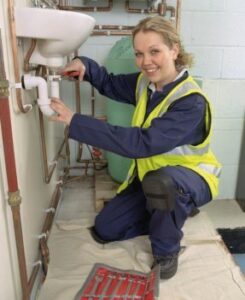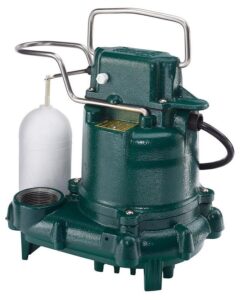Plumbers install and repair systems that carry water, sewage and waste. They work in residential, commercial and industrial settings. In homes, they fix leaky pipes and toilets; in businesses, they set up piping systems and regulate indoor climate.

Qualifications for the job include a high school diploma or GED certificate and completion of a vocational or apprenticeship program. Soft skills that are important for the occupation include listening and critical thinking. Keep reading the article below to Learn More.
Plumbing systems are essential to human survival; they provide water for drinking, heating and washing, remove waste and regulate indoor climate. Plumbers install and repair these vital systems. They are also called on to maintain and repair septic tanks, sewer pipes and other related equipment. Plumbers typically work on both residential and commercial sites. They are employed by construction companies, plumbing contractors or as self-employed professionals.
Getting a job as a plumber requires a high school diploma or equivalent and extensive on-the-job training. Most plumbers complete a five-year apprenticeship program, which includes classroom instruction and paid on-the-job training. Apprenticeships can be found through trade schools and unions. Related work experience can reduce the time required to complete an apprenticeship.
Residential plumbers focus on pipes, fixtures and appliances in private homes and apartments. Their duties include laying out piping systems according to building plans, installing fixtures and connecting them to the water supply and drainage system. They may also be responsible for repairing and maintaining septic systems and water heaters. Residential plumbers often work with other construction tradespeople such as carpenters and electricians.
Industrial plumbers work on larger-scale plumbing systems in factories, hospitals and other large buildings. These systems are more complex and involve higher-grade piping and equipment. They are usually hired to replace or upgrade existing systems, and they must be knowledgeable about building codes and regulations. Plumbers in these roles often collaborate with electrical and mechanical engineers to ensure that the plumbing system is installed properly and meets all applicable requirements.
Emergency plumbers are sometimes called upon to address urgent issues such as burst pipes or clogged drains. They must be able to respond quickly and efficiently, often working around dangerous or hazardous materials. Having good physical strength is also important for this career, as plumbers frequently lift heavy objects and may be required to work in tight spaces.
The tools used by plumbers vary depending on the nature of the job and the site. They must be able to accurately measure lengths of pipe and use power tools to cut or join them together. They must also be able to read blueprints and understand engineering schematics in order to properly install or repair plumbing systems. Plumbers also need to have good communication skills in order to interact with customers and describe their work to others.
Repair
Plumbers repair and maintain the water systems that deliver clean, fresh water to homes and businesses. They use pipes to transport water, chemicals, and waste into and out of buildings, and they install fixtures like sinks, toilets, bathtubs, and showers. They also work on appliances like dishwashers and washing machines. Plumbers often spend time scrubbing drains and pipe joints to remove buildup and keep the flow of water free from blockages.
Performing plumbing repairs requires a high level of skill and precision. Many plumbers take classes and apprenticeships to learn their trade, and they must keep up with advances in plumbing technology. They may also be responsible for inspecting and approving plumbing projects. Plumbers must be able to interpret blueprints and plans to determine the best plumbing solution for a particular building or home.
In addition to repairing leaks, plumbers often troubleshoot to find the source of the problem. This involves using tools like a drain snake to clear clogs and a hydro jet to clean sewer lines. When a homeowner suspects a problem, the plumber often consults a sewer video camera to see what caused the issue. This allows the plumber to make an informed decision about how to proceed with a repair.
Plumbing jobs require physical labor, and plumbers may need to lift heavy objects and climb or crawl in tight spaces. They also frequently need to wear protective gear like safety goggles and rubber gloves. Some plumbers are self-employed, and they may need to manage their own schedules and finances. Others are employees of plumbing companies or agencies, and they may need to follow company policies regarding scheduling, training, and other aspects of their careers.
A plumber’s job is challenging and rewarding at the same time. This career provides an excellent salary and benefits, and it is a great choice for people who enjoy working with their hands and solving problems. However, it is important for potential plumbers to understand the demands of the profession before they commit to it. To avoid making costly mistakes, prospective plumbers should seek the advice of an experienced professional.
Maintenance
You rely on your home’s plumbing systems every day, so it’s important to maintain them. Professional plumbers can help you create a plumbing maintenance plan to keep your system running efficiently and prevent costly repairs. Here are a few benefits of plumbing maintenance:
Prevents major damage
Ignoring minor plumbing issues can lead to disaster. From clogged drains to water leaks, these problems can cause serious damage to your home and increase your repair bills. Plumbing maintenance services can help you avoid these issues by identifying and repairing small problems before they become major catastrophes.
Reduces utility costs
Regular plumbing maintenance can help you save money on your energy bills. A well-maintained plumbing system is more efficient, so it uses fewer resources and produces less waste. Additionally, fixing a small leak can save you hundreds of gallons of water per year.
Extends the lifespan of appliances and pipes
Plumbing systems are complex, but with proper care they can last for a long time. Regular inspections and maintenance can help you avoid major problems and extend the life of your plumbing equipment.
Improves the quality of your water
Plumbing maintenance can ensure that the water coming out of your taps is clean and safe to drink. Over time, pipes can accumulate minerals and debris that affect the quality of your water. By removing these deposits and ensuring that your pipes are in good condition, you can ensure that the water your family drinks is safe and healthy.
Protects your home’s value
A functioning plumbing system is an essential part of any home, and it can add a significant amount to the overall value of your property. In addition, a well-maintained plumbing system can help you avoid expensive repair bills and extend the lifespan of your home’s appliances.
In addition, maintaining your plumbing system can also improve the air quality in your home and protect you from the health risks associated with mold and mildew. By hiring a professional plumber for routine plumbing maintenance, you can ensure that your home’s appliances and pipes are in good condition.
Administration
Plumbing systems are complex networks of pipes, fixtures, and appliances that facilitate water, gas, waste disposal, and indoor climate control in residential and commercial buildings. Plumbers install and repair these systems to ensure they function properly and efficiently. They may work on a variety of different projects, including installing and repairing faucets, toilets, showers, sinks, water heaters, and more. They also work on drainage systems and sewer lines to ensure they are functioning properly. Plumbers can use a variety of tools and equipment to perform their duties, including pipe wrenches, flaring pliers, pipe cutters, soldering torches, and specialized drain cleaning tools.
Some plumbers specialize in certain types of installations or repairs. For example, some plumbers focus on installation of gas lines while others work primarily on residential plumbing systems. Still others may work on both commercial and residential plumbing systems. Each type of plumber requires specific training and knowledge to perform their job well.
A career as a plumber offers several advantages, including competitive pay and job security. However, it can be physically demanding and dangerous, especially when working with confined spaces or high-pressure systems. Plumbers must adhere to strict safety protocols when working in these conditions.
The qualifications needed to become a plumber vary by country and state, but most involve attending an apprenticeship program or earning a journeyman’s certificate. Many plumbers also participate in continuing education courses to keep their skills current and advance their careers.
The plumbing industry is constantly changing, and plumbers must remain up-to-date on the latest technologies and equipment to stay relevant in their field. Plumbers must also be able to interpret blueprints and building codes when planning new plumbing systems. They often collaborate with other professionals, such as architects and construction teams, to ensure plumbing systems are integrated seamlessly into building projects. This can require travel between locations and working odd hours to meet deadlines. In addition, plumbers are sometimes called upon to address emergency situations, such as burst pipes or clogged drains, and must be available 24/7. These challenges can make finding a good balance between work and home life difficult.
